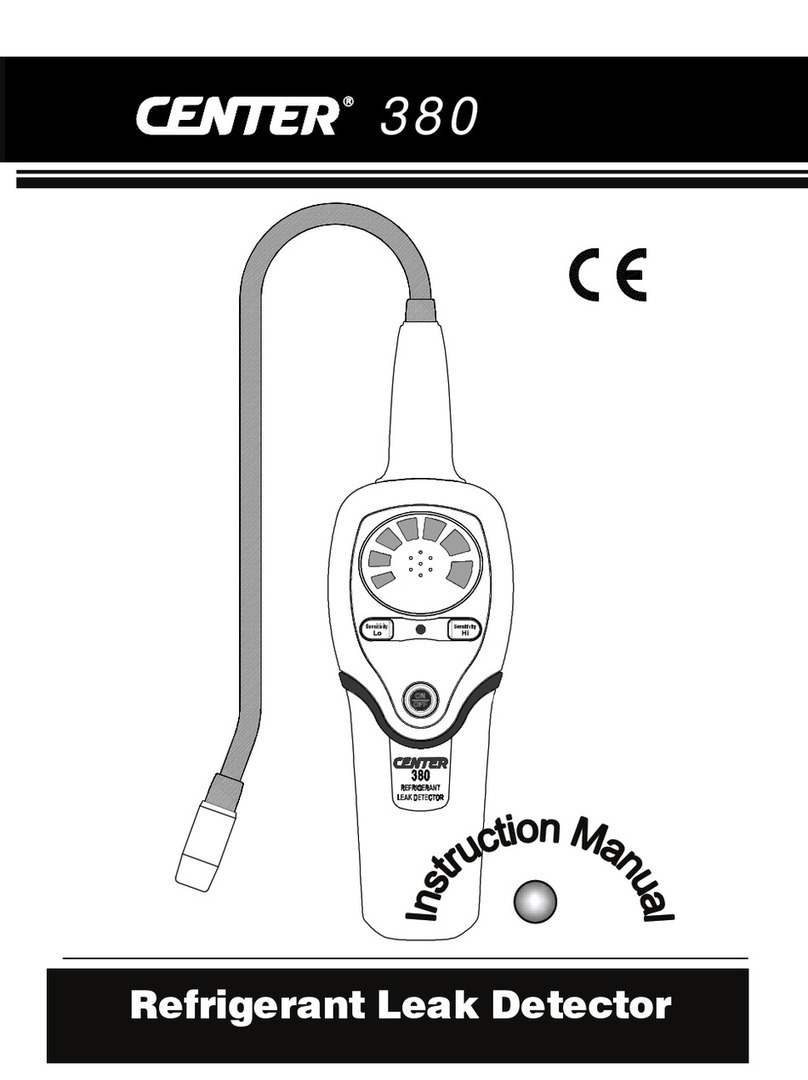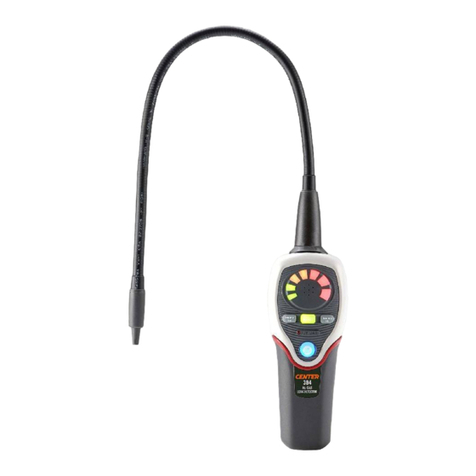
CO2Leak Detector
8
effect. Frequently charging routine after use is
recommended to avoid over discharging which
could damage the battery.
6-3 Lithium Battery Care
The Refrigerant Leak Detector contains a very
powerful Lithium-ion battery. For a long battery life and
safe operation, you must observe the following:
CAUTION!
(1) Do not short-circuit battery.
(2) Do not reverse connect.
(3) Do not dissemble or reconstruct battery.
(4) Do not expose the battery to temperatures higher
than 140°F (60°C).
(5) Do not charge the battery in or nearby heated
places, such as fire, hot vehicles, or direct sunlight.
(6) Do not expose the battery to direct impact or throw
it.
(7) Do not get the battery wet.
(8) Do not deform or pierce the battery in any way.
(9) If there is any battery leakage, do not touch the
battery. In the case that electrolyte gets into the
eyes, flush with fresh water, do not rub, and see a
physician immediately.
(10) Replace immediately if there is any deformity, bad
smell, color change, or other abnormality.






























